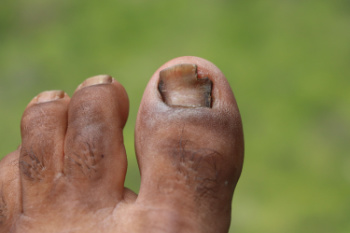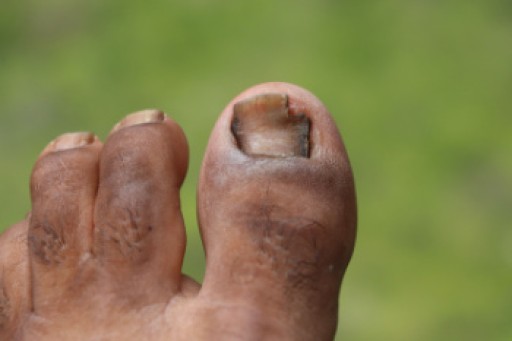
Toenail fungus is a common condition that can cause thickened, discolored, or brittle nails. However, not all changes in toenail appearance are due to fungus. Injuries to the nail bed can cause similar discoloration, as can psoriasis, eczema, or certain skin conditions that affect the nails. Repeated pressure from wearing tight shoes may lead to thickening and changes in shape. Some medications or systemic illnesses, such as thyroid disease, can also alter nail color or texture. Because these conditions can look alike, it is important not to self-diagnose or rely on over-the-counter treatments without confirmation. A podiatrist can examine the nail, possibly perform lab testing, and determine the true cause. Accurate diagnosis ensures that the right treatment is used, whether it is antifungal therapy or another form of care. If you notice nail changes, it is suggested that you see a podiatrist for a diagnosis and appropriate treatment.
If left untreated, toenail fungus may spread to other toenails, skin, or even fingernails. If you suspect you have toenail fungus it is important to seek treatment right away. For more information about treatment, contact one of our podiatrists of Lewis Wolstein, DPM, P.C. & Associates. Our doctors can provide the care you need to keep you pain-free and on your feet.
Symptoms
- Warped or oddly shaped nails
- Yellowish nails
- Loose/separated nail
- Buildup of bits and pieces of nail fragments under the nail
- Brittle, broken, thickened nail
Treatment
If self-care strategies and over-the-counter medications does not help your fungus, your podiatrist may give you a prescription drug instead. Even if you find relief from your toenail fungus symptoms, you may experience a repeat infection in the future.
Prevention
In order to prevent getting toenail fungus in the future, you should always make sure to wash your feet with soap and water. After washing, it is important to dry your feet thoroughly especially in between the toes. When trimming your toenails, be sure to trim straight across instead of in a rounded shape. It is crucial not to cover up discolored nails with nail polish because that will prevent your nail from being able to “breathe”.
In some cases, surgical procedure may be needed to remove the toenail fungus. Consult with your podiatrist about the best treatment options for your case of toenail fungus.
If you have any questions please contact our office located in Co-Op City, NY . We offer the newest diagnostic and treatment technologies for all your foot and ankle needs.











